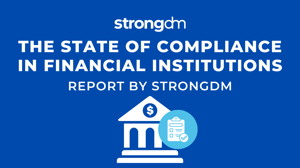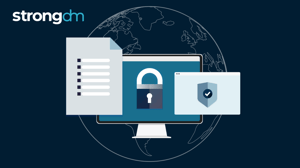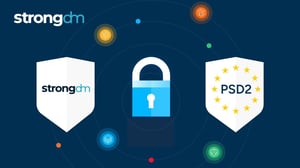NIST Password Guidelines: 2025 Updates & Best Practices
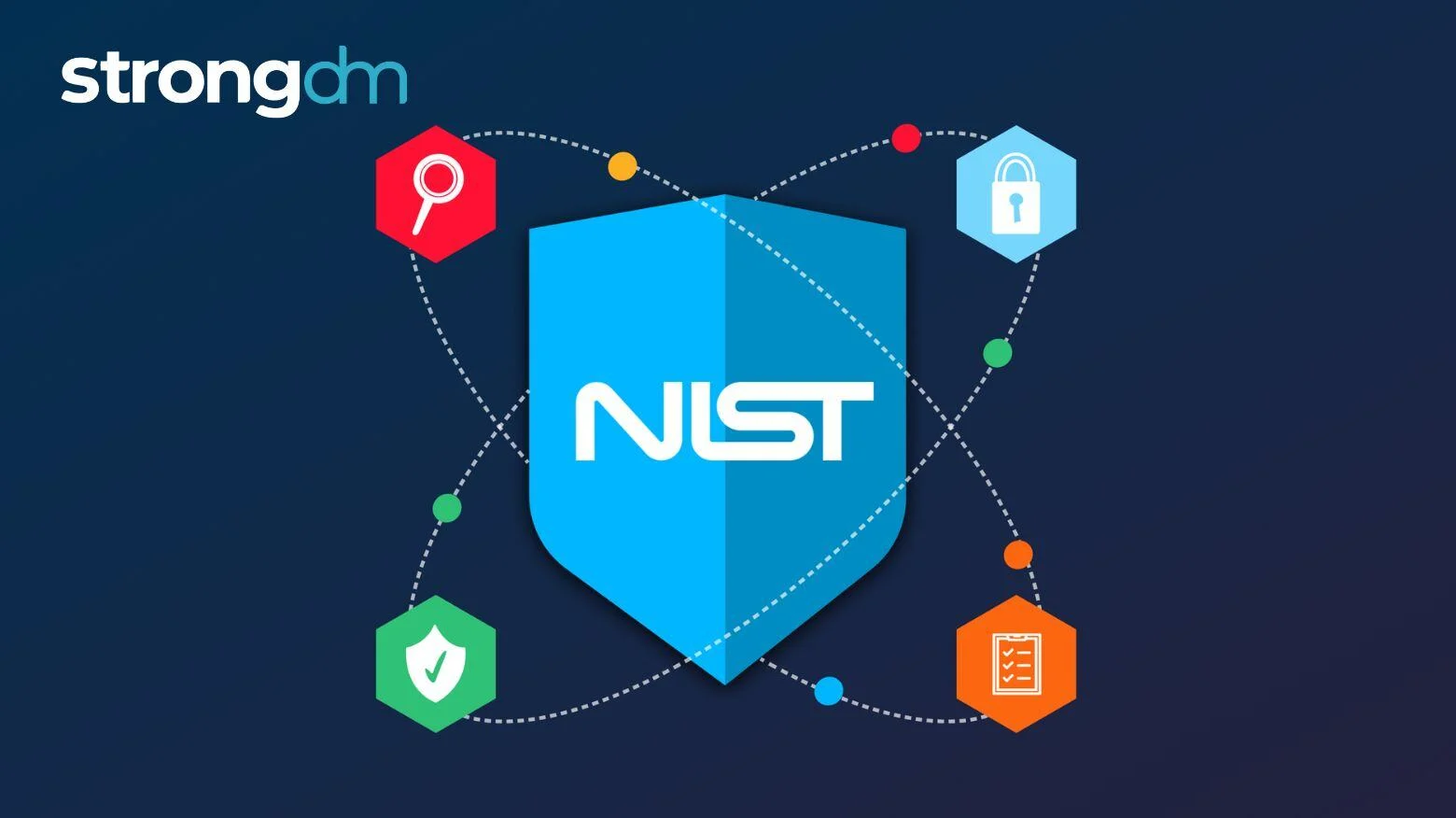

Written by
John MartinezLast updated on:
June 25, 2025Reading time:
Contents
Built for Security. Loved by Devs.
- Free Trial — No Credit Card Needed
- Full Access to All Features
- Trusted by the Fortune 100, early startups, and everyone in between
The latest updates in NIST password guidelines shift focus from complexity to usability. Key changes include:
- Prioritizing password length over complexity
- Mandating compromised credential screening
- Encouraging passwordless authentication methods
- Eliminating forced password resets unless a compromise is suspected.
This guide will help you understand how to implement NIST's latest password recommendations to strengthen your organization's security posture, reduce user friction, and maintain compliance with current standards.
What Are NIST Password Guidelines?
NIST sets the gold standard for authentication security, originally designed for federal agencies but now shaping compliance across industries like HIPAA, PCI-DSS, and SOC 2. Its guidelines are grounded in real-world research, not outdated security folklore, addressing the failures of traditional policies—such as complexity rules and forced resets—that often lead to predictable passwords, reuse, and increased helpdesk calls.
Password security remains the foundation of digital access control, with 94% of data breaches involving compromised credentials. The National Institute of Standards and Technology sets the benchmark for password security through its Special Publication 800-63B. These guidelines shape how federal agencies, contractors, and private organizations protect digital assets.
Organizations follow NIST password guidelines because they reflect extensive research and real-world testing of authentication methods. Although initially developed for government systems, these guidelines have become the generally accepted framework for secure password practices for almost all industries.
💡Solution: StrongDM helps organizations implement NIST-aligned access controls by:
- Enforcing password screening against known breach databases
- Automating password policies to meet compliance across all systems
- Enabling passwordless authentication with phishing-resistant MFA
The Evolution of NIST Password Standards
From 2017 to 2020: Key Changes
The release of NIST Special Publication 800-63B in 2017 marked a fundamental shift in password security thinking. Research from Carnegie Mellon University supported NIST's bold move from traditional complexity rules toward length-based requirements.
This period introduced several groundbreaking changes. Organizations no longer needed to enforce regular password changes unless there was evidence of compromise. NIST also eliminated requirements for special characters and mixed-case letters, recognizing that such rules often led to predictable patterns like "Password123!".
Password screening against known compromised credentials became mandatory, while the guidelines introduced new standards for password storage. Verifying systems now had to implement salting and hashing with functions like PBKDF2, which significantly increased the required effort and raised the computational cost for attackers attempting to crack stored passwords.
SP 800-63B and Digital Identity Guidelines
The latest SP 800-63B guidelines indicate an evolution of the framework towards more authentication practices, partly because the framework now embraces passkeys and sync-able authenticators. This reflects the growing need for both security and user convenience in digital identity management.
NIST has organized this new approach around three key categories: phishing-resistant authentication methods, improved account recovery processes, and enhanced guidance for credential service providers. And to lend credibility to these changes, NIST authored a recent study that demonstrates how these changes respond directly to the surge in authentication-based attacks.
💡Solution: StrongDM provides phishing-resistant authentication and automated credential management, ensuring secure access with minimal user friction.
Latest Updates in NIST 800-63-4
In September 2024, NIST released the second public draft of SP 800-63-4, introducing substantial changes to password management. According to new research from NIST, the new guidelines eliminate mandatory password complexity requirements and periodic resets, focusing instead on password length and screening against compromised credentials.
The updated framework emphasizes passwordless authentication methods, with research showing that only cryptographic solutions like USB tokens and passkeys offer true phishing resistance. To address these changes, enterprises have to implement rigorous password blocklists with larger databases. The intended result, in the eyes of NIST is incrementally better protection against common password choices.
These changes reflect NIST's commitment to balancing security with usability. A cybersecurity survey reveals that organizations implementing these guidelines report reduced password-related support tickets while maintaining strong security postures.
Current NIST Password Requirements for 2025
The End of Complexity Rules: What It Means for You
What’s gone:
❌ Required uppercase, numbers, and symbols
❌ Mandatory password resets every 90 days
❌ Arbitrary complexity policies
What’s required now:
✅ Minimum 8-character passwords (15+ for privileged accounts)
✅ Password screening against compromised credential databases
✅ Support for passwordless authentication and passkeys
Minimum Password Length Requirements
Password length serves as the cornerstone of NIST's updated authentication framework. While the baseline requirement mandates a minimum of 8 characters, security research reveals that passwords under 8 characters can be cracked within hours using modern computing power.
A study by Kaspersky found that each additional character exponentially increases password strength, with 16-character passwords requiring centuries to crack using current technology.
💡Solution: StrongDM enforces NIST’s 15-character minimum for privileged accounts to prevent brute force attacks, while supporting up to 64-character passwords and password managers for secure storage.
Password Complexity Guidelines
NIST's dramatic shift away from traditional password complexity rules shows that a new authentication strategy is needed by organizations. A security analysis reveals that mandatory character combinations often lead to predictable patterns like "Password123!" that are easily cracked.
Enterprises have to focus on eliminating weak passwords through comprehensive blocklists rather than enforcing composition rules. In other words, there have to be measured in place that take password construction out of the hands of users.
According to recent cybersecurity data, when users face strict complexity requirements, 82% of them will create passwords following predictable patterns, and that makes them vulnerable to dictionary attacks.
💡Solution: StrongDM ensures compliance with updated guidelines through dynamic password screening and passphrase support, blocking compromised credentials while allowing secure, memorable passwords.
Special Character and Unicode Support
Character set restrictions in passwords have evolved significantly under the new NIST framework. A security implementation study shows that organizations supporting Unicode and extended ASCII characters report 43% fewer password reset requests.
The updated guidelines mandate acceptance of all printable ASCII characters, spaces, and Unicode symbols, including emojis and international characters. By expanding the available options, users are able to create memorable passphrases in their native languages while, at teh same time, adhering to accepted guidelines.
Enterprises that adopt these expanded character set policies need to handle Unicode normalization correctly if they want to avoid authentication headaches. The good news? StrongDM takes care of all that behind the scenes, automatically ensuring passwords work smoothly across systems while keeping everything NIST-compliant.
Password Length vs. Complexity: NIST's New Approach
Why Length Matters More Than Complexity
Modern computing power has fundamentally changed password security dynamics. According to MIT password recommendations, an 8-character password with special characters can be cracked in under an hour, while a 12-character simple phrase requires over 200 years to withstand brute-force attacks using the same resources.
The shift toward length-based security also addresses human behavior patterns. Think of it this way; users tend to create more memorable passwords when they're free from complex requirements, and that reduces risky practices like password reuse and sticky note storage. This alignment of security with user psychology represents a key evolution in authentication strategy.
Recommended Password Length Best Practices
NIST's guidelines establish very clear parameters for password length. The recommendation is a minimum of 8 characters for standard accounts and 15 characters for high-security systems. A large scale study by Georgia Institute of Technology demonstrates that outdated password practices are putting millions at risk.
For maximum security, NIST advocates that passwords be up to 64 characters. Clearly, there are a huge variety of ways this can all be implemented, but StrongDM automatically enforces these length requirements while supporting Unicode characters, making it easier for users to create a longer password that is both memorable and secure.
Security experts say that passwords between 12-16 characters provide the optimal balance between security and usability. Organizations should consider implementing adaptive length requirements based on risk levels, with stricter minimums for privileged accounts and sensitive data access.
The End of Traditional Complexity Rules
By rejecting traditional and long-held complexity requirements, NIST is shaking up all facets of password-related security measures. Mandated special characters and mixed case requirements often lead to predictable patterns like "Password123!" or "Admin2024$", making passwords more vulnerable to attack.
Organizations implementing these updated guidelines can experience a decrease in password resets and improved user satisfaction. The removal of arbitrary complexity rules allows users to create longer, more memorable passwords while maintaining robust security through enhanced screening against compromised credential databases.
💡Solution: Here again, StrongDM automatically validates passwords against breach databases and supports natural language passphrases, helping organizations transition smoothly to NIST's modernized approach.
Password Management Standards
Password Storage and Encryption
NIST mandates secure password storage through advanced encryption techniques to protect against data breaches. The NIST guidelines require organizations to implement salting and hashing using memory-hard functions, with bcrypt and Argon2 emerging as preferred solutions.
Organizations must store passwords in a form resistant to offline attacks. According to the Federal Information Security Management Act, verifiers need approved encryption and authenticated protected channels when requesting memorized secrets, providing defense against eavesdropping and man-in-the-middle attacks.
💡Solution: StrongDM automates secure key derivation, encrypts password operations, and prevents vulnerabilities like plain-text password exposure.
Password Reset and Recovery Protocols
Let's look at just how much of a shift this represents. Knowledge-based authentication questions like "first pet" or "mother's maiden name" are no longer considered secure, with most of these answers being discoverable through social media.
Modern recovery protocols must utilize secure channels separate from the primary authentication method. Implementing multi-channel verification leads to a reduction in account takeover incidents. For example, a multi-channel approach mandates verification through separate channels, usually in the form of hardware tokens or biometric authentication.
For enhanced security, NIST goes so far as to recommend the implementation of rate limiting on authentication attempts and enforcing mandatory cooling-off periods after failed recovery attempts. The recommendation is for organizations to establish and manage detailed logs of all password reset activities in an effort to enable rapid response to potential security incidents. Ultimately, this will protect personal information through robust privacy controls.
Service Account Password Guidelines
Service accounts represent a critical vulnerability in enterprise environments. NIST's framework emphasizes rigorous controls for service account passwords, requiring organizations to implement automated rotation schedules and strict access limitations.
Unmanaged service accounts often lead to security breaches in cloud environments. To address this risk, NIST mandates that service account passwords must span at least 32 characters and undergo cryptographic generation through secure random number generators.
💡Solution: StrongDM automates service account management, enforces password security, and maintains audit trails, ensuring least privilege access and NIST compliance.
NIST Authentication Standards
Multi-Factor Authentication Requirements
NIST's guidelines mandate robust MFA implementation across all privileged access points. According to a recent CISA analysis, organizations must deploy at least two distinct authentication factors from separate categories - something you know (password), have (security token), or are (biometric).
Phishing-resistant MFA could help prevent account compromise attacks. For this reason, NIST specifically prohibits SMS-based authentication for federal systems, requiring verifiers to implement time-based one-time passwords (TOTP) or hardware security keys.
Risk management processes must now include periodic assessment of authentication methods, with organizations required to document their MFA implementation strategy and maintain records of authentication attempts. This approach maps to NIST's broader focus on measurable security outcomes and goes far beyond prescriptive controls.
Biometric Authentication Guidelines
NIST's guidelines establish strict parameters for biometric authentication, requiring a False Match Rate (FMR) of no more than 1 in 10,000 and a False Non-Match Rate (FNMR) below 5%. These standards ensure reliable verification across diverse demographics while maintaining privacy.
NIST mandates that biometric data must be encrypted during capture and immediately deleted after generating cryptographic templates. This "collect-and-delete" approach reduces privacy risks while maintaining authentication effectiveness.
Organizations implementing biometric systems must provide alternative authentication methods for individuals who cannot use the primary biometric modality, ensuring accessibility without compromising security. StrongDM supports these requirements with secure template storage and flexible authentication options.
Password Manager Integration
NIST's guidelines strongly endorse password managers as essential tools for maintaining robust authentication practices. To meet NIST requirements, password managers must implement zero-knowledge encryption and support copy-paste functionality in password fields.
💡Solution: StrongDM integrates with password managers, enforces NIST-compliant policies, validates credentials, and automates rotation for continuous compliance.
Password Rotation and Expiration Policies
When to Change Passwords
Modern password expiration policies have evolved significantly from traditional calendar-based rotations. According to the Cybersecurity & Infrastructure Security Agency, mandatory periodic password changes often lead to weaker credentials, with users typically making minor modifications to existing passwords. Instead, organizations should implement event-based password changes triggered by specific security incidents.
Companies adopting event-based password policies may experience fewer credential-related breaches compared to those using fixed rotation schedules. This approach aligns with current Digital Identity Guidelines, which recommend password changes in response to compromise indicators rather than arbitrary time periods.
Organizations should enforce immediate password resets when detecting suspicious login attempts, unusual account activity, or potential data breaches. For privileged accounts accessing sensitive systems, implementing automated monitoring tools can help identify these security events and prompt necessary credential updates.
Emergency Password Reset Procedures
Rapid response capabilities for emergency password resets are crucial for maintaining business continuity. According to StrongDM, 64% of organizations have their productivity impacted on a daily or weekly basis due to access and credential issues.
Modern emergency reset protocols must balance speed with security. Implementing a three-tier verification system using trusted devices, backup authentication methods, and manager approval for sensitive accounts may reduce unauthorized reset attempts.
For privileged accounts accessing critical infrastructure, organizations need documented procedures that include IP address verification and out-of-band authentication. A combination of lowercase letters and dictionary words can create temporary credentials that meet NIST guidelines while remaining memorable for urgent situations. StrongDM's infrastructure access platform automates these processes, ensuring every client maintains security even during emergencies.
Breach Response Protocol
Effective breach response protocols require immediate action when credentials are compromised. Organizations that detect and respond to breaches within 24 hours can substantially reduce credential abuse.
Organizations must maintain an incident response playbook that includes automatic credential invalidation, system-wide password resets, and user notification procedures. Implementing parallel authentication channels during breach recovery can help maintain business continuity while compromised credentials are being addressed.
💡Solution: StrongDM automates breach response by revoking compromised credentials, enforcing NIST-compliant passwords, and using real-time monitoring for targeted mitigation.
Implementing NIST Password Guidelines
Creating a Password Policy
Developing an effective password policy requires balancing security requirements with operational needs. Organizations that align their password policies with NIST guidelines can see a reduction in password-related security incidents.
Start by defining clear objectives and scope, including which systems and user groups the policy will cover. Then, document specific requirements for different account types, from standard users to privileged administrators. Consider environmental factors like remote work and third-party access when establishing policy parameters.
Your policy should address password creation, storage, and lifecycle management while incorporating NIST's emphasis on length over complexity. StrongDM's infrastructure access platform helps automate policy enforcement through customizable rules that adapt to your organization's specific needs and risk profile.
Training and User Education
Effective password security hinges on comprehensive user education. Organizations with robust training programs experience fewer password-related incidents.
Beyond traditional training methods, gamification has emerged as a powerful educational tool. Interactive password security modules increase retention rates compared to conventional presentations. Organizations should incorporate scenario-based exercises that simulate real-world password threats while teaching NIST-compliant practices.
Regular reinforcement through microlearning sessions keeps password security top of mind without overwhelming users. Short, focused training delivered through mobile apps or email reminders has proven particularly effective for remote workforces, reducing password reset requests.
Compliance Monitoring
Maintaining continuous NIST password compliance requires robust monitoring systems and regular audits. Organizations with automated compliance monitoring can detect password policy violations within hours rather than days or weeks.
Real-time monitoring should track key metrics like failed authentication attempts, password reset patterns, and credential sharing incidents. Automated scanners that check password hashes against known breach databases should also be implemented to monitor for compliance drift.
💡Solution: StrongDM's infrastructure access platform streamlines this process by providing detailed audit logs and real-time compliance alerts across your entire authentication ecosystem.
Common Implementation Challenges
Legacy System Integration
Integrating NIST password guidelines with legacy systems presents unique technical hurdles. According to NIST's Digital Transformation Guide, organizations often struggle with outdated authentication protocols that don't support modern password requirements.
Some enterprises still maintain legacy systems unable to handle extended character limits or implement proper password hashing. These systems may lack support for Transport Layer Security (TLS) 1.3 or newer encryption standards essential for NIST compliance.
To bridge this gap, organizations can implement middleware solutions that translate between modern and legacy authentication protocols. For critical systems that cannot be directly upgraded, deploying password vaults and privileged access gateways helps maintain security while working within technical constraints.
User Adoption Barriers
User resistance to new password guidelines stems from deeply ingrained habits and behavioral patterns. Employees often view password policy changes as disrupting their workflow, while security fatigue leads to non-compliance.
Users struggle with memorizing multiple complex passwords, leading to risky workarounds like password recycling or unauthorized storage methods.
💡Solution: StrongDM simplifies adoption with intuitive interfaces and gradual implementation, aligning with user behavior while ensuring NIST compliance and reducing resistance.
Technical Limitations
Hardware constraints pose significant challenges for NIST password implementation. Authentication systems often struggle with memory-hard hashing functions required by NIST, particularly in embedded systems and IoT devices.
Storage requirements for proper password salting and hashing create bottlenecks in resource-constrained environments. Implementing PBKDF2 with the recommended 310,000 iterations demands substantial CPU resources, impacting system performance on legacy hardware.
Rate-limiting mechanisms, essential for preventing brute-force attacks, can strain network infrastructure when handling high-volume authentication requests. Organizations must carefully balance security requirements with system capabilities, often requiring significant infrastructure upgrades to maintain NIST compliance while ensuring acceptable performance levels.
How StrongDM Helps Meet NIST Password Standards
StrongDM delivers comprehensive NIST password compliance through our infrastructure access platform. Organizations using integrated access solutions can achieve higher NIST compliance rates. Our platform automates password validation against NIST's latest requirements while providing real-time monitoring of authentication patterns.
StrongDM validates every authentication attempt against current NIST standards, helping organizations maintain robust security without compromising user experience or operational efficiency.
Ready to see how it works? Schedule a demo today and discover how StrongDM can help your organization stay secure and compliant effortlessly.
Next Steps
StrongDM unifies access management across databases, servers, clusters, and more—for IT, security, and DevOps teams.
- Learn how StrongDM works
- Book a personalized demo
- Start your free StrongDM trial
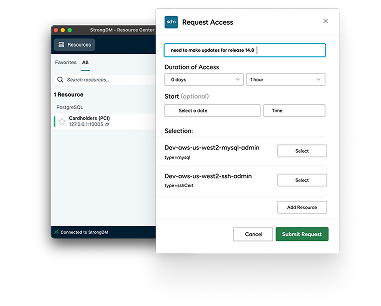
Categories:

About the Author
John Martinez, Technical Evangelist, has had a long 30+ year career in systems engineering and architecture, but has spent the last 13+ years working on the Cloud, and specifically, Cloud Security. He's currently the Technical Evangelist at StrongDM, taking the message of Zero Trust Privileged Access Management (PAM) to the world. As a practitioner, he architected and created cloud automation, DevOps, and security and compliance solutions at Netflix and Adobe. He worked closely with customers at Evident.io, where he was telling the world about how cloud security should be done at conferences, meetups and customer sessions. Before coming to StrongDM, he lead an innovations and solutions team at Palo Alto Networks, working across many of the company's security products.
You May Also Like

